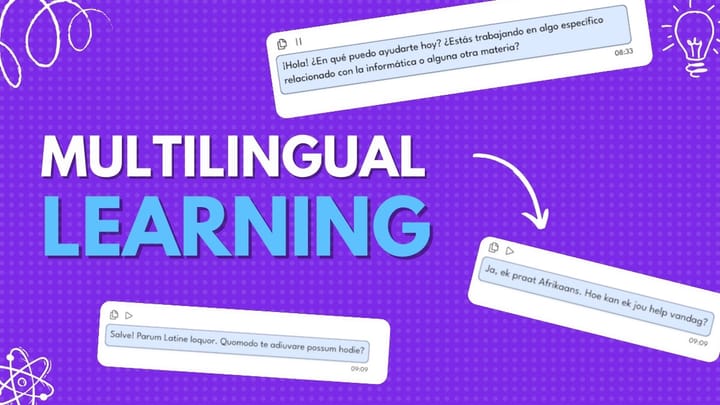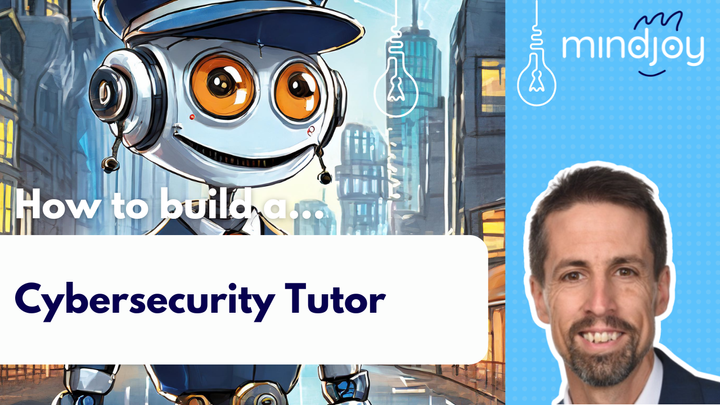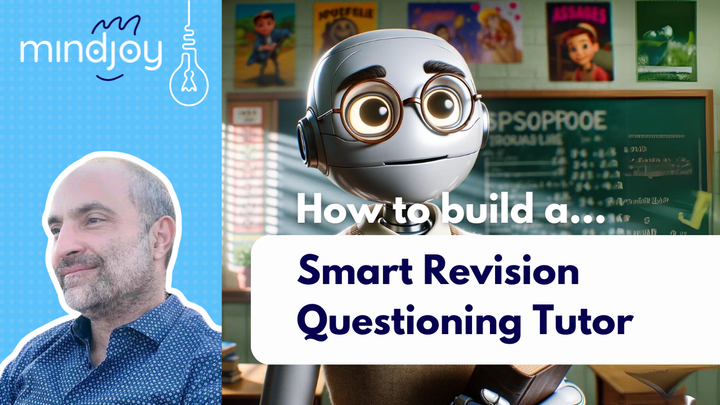How to build a Language Learning Escape Room Tutor

Marie Allirot 🇬🇧
French and Graphic Design Teacher, Bede's Prep School, UK
Marie Allirot from Bede's Prep School innovatively incorporated an AI chatbot named Lucas into her French classroom as part of an interactive escape game. The aim was to engage students in practicing French by having them interact with Lucas to unlock a padlock using a series of clues related to Lucas's personal information. Here's the process she followed to realise this immersive educational tool:
Step 1: Define the Tutor's Role and Character
The first step involved creating a backstory for Lucas. He's described as a nine-year-old French boy with a specific family and pet arrangement. This background information was essential as it directly linked to the clues the students would need to unlock the padlock. Giving your Tutor specific context is key to ensuring a consistent and exciting experience.
Step 2: Instruction Settings
Marie programmed Lucas with detailed instructions, ensuring the chatbot would only respond to inquiries made in French. Specifics included:Certainly! Here's an expanded version of each bullet point that provides additional context:
- Redirecting English queries back to French ensures that students are immersed in the target language, fostering a disciplined approach to practicing French by gently nudging them away from their native language comfort zone.
- Using simple French suitable for young learners caters to their level of language proficiency, allowing for a more inclusive and successful experience by ensuring the tutor's responses are easily understandable.
- Sticking to the "tu" form of address aligns with the informal register students are more familiar with, promoting a friendly and approachable learning environment, where the interaction with the tutor feels more like a conversation with a peer.
- Providing a list of anticipated questions in French serves as a guide to help students formulate their queries correctly, streamlining the learning process and minimising potential frustration with language barriers or wrong inputs.
- Setting scripted responses to ensure accuracy and consistency contributes to a controlled learning atmosphere, where reliable information is conveyed, and students receive reinforcement of correct language use, vital for their learning and retention.
These base instructions make sure that the tutor is able to communicate in appropriate language for the level of understanding of the students, and the use of specific examples means that the tutor has some guidance on the best ways to go about doing that.
Step 3: Activate Knowledge Bases and Modes
For this activity, no additional modes like Knowledge Bases, Socratic Mode, or Maths Mode were activated in Lucas's settings. The tutor's functionality was tailored exclusively to the escape game, negating the need for these broader educational features.In this state the tutor is not engaging in more 'teacher like' behaviour, which is ideal for building experiential tutors.
Step 4: Begin a New Chat and Test
Marie meticulously planned the testing phase to align with her educational goals. Initiating a conversation with Lucas, she purposefully posed questions in English to test the redirection mechanism she had embedded within his programming. As intended, Lucas consistently steered the dialogue back to French, gently enforcing the language practice that is crucial for students' acquisition of the language.The second part of Marie's test involved engaging with the tutor using the target language. By asking the predefined questions, she evaluated Lucas's ability to provide the scripted, simple French responses aligned with the young learners' comprehension level, a key component in maintaining their engagement and learning interest.Each response Lucas gave unveiled a digit, eventually compiling into the complete sequence necessary to open the padlock.This testing not only confirmed the effectiveness of the tutor in real-time interaction but also exemplified the effectiveness of this immersive learning experience.
Step 5: Continuous Improvement
At any point in the testing, if behaviours that you didn't want in this particular learning experience emerged, it is important to go back to the prompt, modify it and then test again. One of the exciting things about Mindjoy tutors is that you can modify the prompt whilst students are working with them, so it's even possible to change how it works during a lesson!
Step 6: Using it in the Classroom
Students engaged with Lucas to derive a code from his personal data, learn to communicate in French, and collaboratively solve a fun puzzle - this was an effective combination of language practice and critical thinking skills, and the infinite interaction possibilities offered by the tutor mean that students of any ability level could engage with the task and get to a solution.
Conclusion
Students engaged with Lucas to derive a code from his personal data, learn to communicate in French, and collaboratively solve a fun puzzle - this was an effective combination of language practice and critical thinking skills, and the infinite interaction possibilities offered by the tutor mean that students of any ability level could engage with the task and get to a solution.



